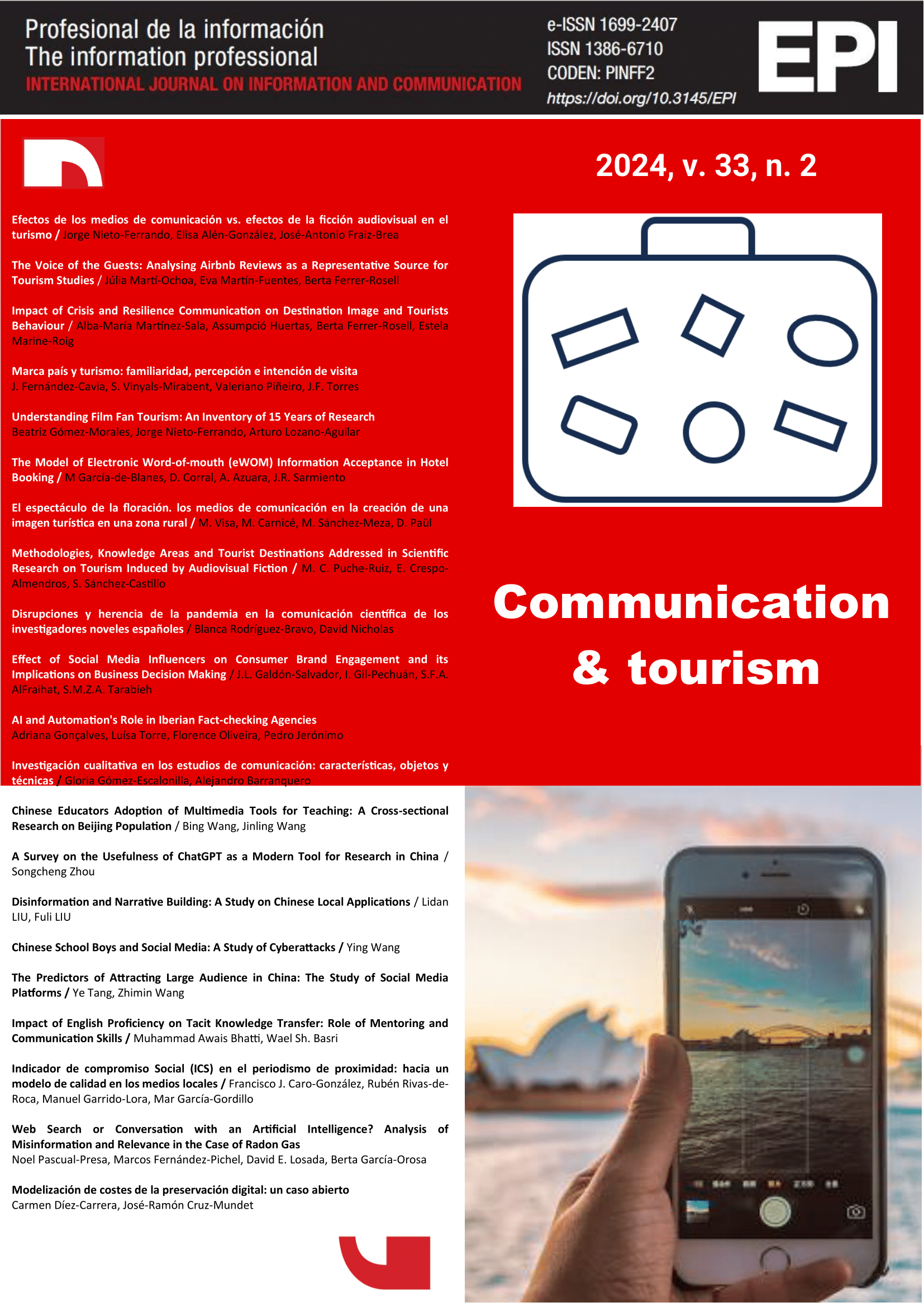Impact of Crisis and Resilience Communication on Destination Image and Tourists Behaviour
DOI:
https://doi.org/10.3145/epi.2024.0203Keywords:
Communication Strategies, Crisis Communication, Crisis Management, Destination Image, Destination Marketing Organization, Destination Recommendation, Facebook, Pandemics, Resilience Communication, Perceived Health Risk, Post Impression, Social Media, Social Networks, Tourism, Visit IntentionAbstract
Resilience communication is a fundamental tool for destinations to improve their image and recover after a crisis. Social media are also important tools for tourism communication and for creating tourist experiences and destination image. Therefore, social media are key tools for crisis communication. Based on a series of hypotheses, this paper proposes a conceptual model of crisis communication management that responds to the need to establish a set of premises related to resilience communication in the tourism sector. The empirical analytical study consisted of the quantitative analysis of the results of a survey questionnaire applied to test the hypotheses based on the formulation of a structural equation model. The results demonstrate the importance of social media communication in Perceived Health Risk (PHR) and its effect on perceived impressions, destination image, and related behavioral responses (Destination Recommendation, DR, and Visit Intention, VI). The four hypotheses in the research model have been confirmed, as the effects are statistically significant in a sample of posts analyzed, and the selected items explain every one of the factors. Specifically, the analysis shows that PHR negatively affects Destination Image (DI) and, in a stronger way, Post Impression (PI). Secondly, PI and DI influence one another and covary to some extent. Moreover, the overall DI, which has been affected by PHR, in turn affects DR and VI, demonstrating that PHR in communication ultimately influences DR and VI negatively too. Finally, is also verified both DR and VI are related and covary as intrinsic behavioral aspects related to DI. Resilience communication is a basic tool for destinations to improve their image and recover after a crisis and this research contributes to the literature on the subject by analyzing the impact of this communication on tourists, and specifically on destination image.
Downloads
Downloads
Published
How to Cite
Issue
Section
License
Copyright (c) 2024 Profesional de la información

This work is licensed under a Creative Commons Attribution 4.0 International License.
Dissemination conditions of the articles once they are published
Authors can freely disseminate their articles on websites, social networks and repositories
However, the following conditions must be respected:
- Only the editorial version should be made public. Please do not publish preprints, postprints or proofs.
- Along with this copy, a specific mention of the publication in which the text has appeared must be included, also adding a clickable link to the URL: http://www.profesionaldelainformacion.com
- Only the final editorial version should be made public. Please do not publish preprints, postprints or proofs.
- Along with that copy, a specific mention of the publication in which the text has appeared must be included, also adding a clickable link to the URL: http://revista.profesionaldelainformacion.com
Profesional de la información journal offers the articles in open access with a Creative Commons BY license.




